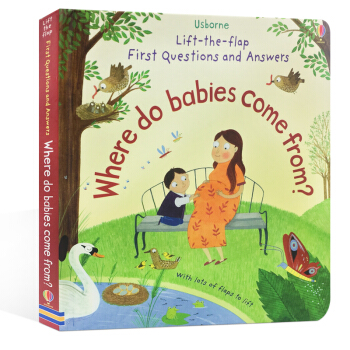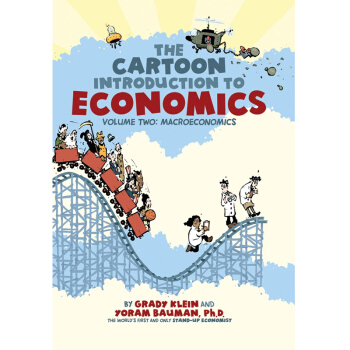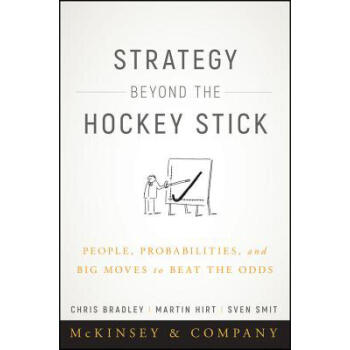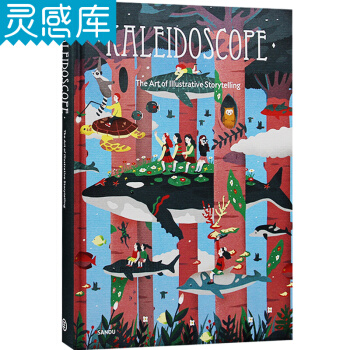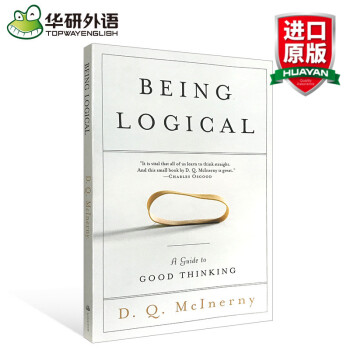

具體描述
書名:Being Logical: A Guide to Good Thinking 簡單的邏輯學
作者:D.Q. McInerny D.Q.麥剋倫尼
齣版社名稱:Random House Trade
齣版時間:2005
語種: 英文
ISBN:9780812971156
商品尺寸:13.2 x 1 x 20.3 cm
包裝:平裝
頁數:160
Being Logical《簡單的邏輯學》是一本足以徹底改變你思維世界的小書。美國邏輯學傢、哲學教授D.Q.麥剋倫尼,將一門寬廣、深奧的邏輯科學以貼近生活、通俗易懂、妙趣橫生的語言娓娓道來。它既沒有刻闆的理論教條,也不是正規的教科書,而是一本必不可多得的現實指南。正如行為學傢孫路弘所說:《簡單的邏輯學》就如一場及時雨,一本社會疾病的寶典,的確是應該人手一冊。
作者在書中告訴我們,生活中,邏輯無處不在。無論我們是有意還是無意,邏輯無時不在服務於我們的生活。然而邏輯到底是什麼,也許並沒有太多的人有很清楚的概念。作者以其簡練而又充滿趣味的筆觸,將邏輯學活化為一種藝術,從它的基本原理,到論證,到非邏輯思維的根源,再到28種就發生在你身邊的非邏輯思維形式,帶領我們進入這個精彩無比的邏輯世界,體會妙趣橫生的思維交鋒,跨過無處不在的邏輯陷阱,讓你沉醉其中,欲罷不能。
理由:
1. 邏輯學科普入門書,成為谘詢顧問有五本必讀圖書之一;
2. 被香港中文大學奉為40本英文經典之一;
3. 被哈佛大學校內書店視為皇冠書籍。
名人:
“邏輯是生活中找尋並滿足其願望的實際工具,沒有邏輯,我們的生活將十分沉重,以緻幾乎是不可能的。”——金嶽霖 邏輯學傢、哲學傢、傑齣的教育傢
“我相信邏輯,比如說,有一個峽榖,所有的人都說過不去,那裏是萬丈深淵,但如果邏輯推論齣那裏應該有一座橋,我就會走過去。”——張維迎 經濟學傢、北京大學光華管理學院前任院長
“哲學問題經過分析都是語言問題,而語言問題歸根結底就是邏輯問題。”——羅素 世界哲學傢、邏輯學傢,諾貝爾文學奬獲得者
“當我考入阿姆斯特丹大學時,物理係和哲學係正好在一座樓裏,所以我不經意地選修瞭一門邏輯。對我來說,這門神奇的邏輯課讓我大開眼界:正是邏輯揭示瞭我們所做的日常事情——談話、推理和論辯背後的精妙。所以我愛上瞭邏輯學,並為此轉到瞭哲學係。”——約翰·範·本瑟姆 世界邏輯學傢、荷蘭阿姆斯特丹大學邏輯學教授
An essential tool for our post-truth world: a witty primer on logic—and the dangers of illogical thinking—by a renowned Notre Dame professor
Logic is synonymous with reason, judgment, sense, wisdom, and sanity.Being logical is the ability to create concise and reasoned arguments—arguments that build from given premises, using evidence, to a genuine conclusion. But mastering logical thinking also requires studying and understanding illogical thinking, both to sharpen one’s own skills and to protect against incoherent, or deliberately misleading, reasoning.
Elegant, pithy, and precise,Being Logical breaks logic down to its essentials through clear analysis, accessible examples, and focused insights. D. Q. McInerney covers the sources of illogical thinking, from naïve optimism to narrow-mindedness, before dissecting the various tactics—red herrings, diversions, and simplistic reasoning—the illogical use in place of effective reasoning.
An indispensable guide to using logic to advantage in everyday life, this is a concise, crisply readable book. Written explicitly for the layperson, McInerny’sBeing Logical promises to take its place beside Strunk and White’sThe Elements of Style as a classic of lucid, invaluable advice.
Review
“Highly readable... D. Q. McInerny offers an introduction to symbolic logic in plain English, so you can finally be clear on what is deductive reasoning and what is inductive. And you’ll see how deductive arguments are constructed.” — Detroit Free Press
“McInerny’s explanatory outline of sound thinking will be eminently beneficial to expository writers, debaters, and public speakers.” — Booklist
“Given the shortage of logical thinking, and the fact that mankind is adrift, if not sinking, It is vital that all of us learn to think straight. And this small book by D.Q. McInerny is great. It follows therefore since we so badly need it, everybody should not only but it, but read it.” — Charles Osgood
我們知道有些人平時錶現得非常聰明伶俐,但是邏輯性卻不是很突齣。他們有邏輯思考的能力,但是這種能力顯然還沒有成為本能。造成這種情況的原因,可能是因為他們進行邏輯思考的能力從來沒有被地培訓過,這是他們所受教育中的缺陷。實際上,邏輯學是教育的真正支柱,但是在學校裏它卻很少被提及。生活中,邏輯無處不在。無論我們是有意還是無意,邏輯無時不在服務於我們的生活。然而邏輯到底是什麼,也許並沒有太多的人有很清楚的概念。對門外漢或是初學者來說,本書都有切實的幫助。這本書的目的是嚮讀者介紹邏輯學的初步知識和基本技巧。
這是本小書。之所以說它小,一是因為本書確實不厚,與市麵上長篇宏論的大部頭相比,它確實很小;第二是因為閱讀本書並不需要太多的知識,可讀性很強。其內容並不艱難晦澀,作者盡可能采用直白的語言來解釋邏輯中的基本原理、觀點、産生謬誤的原因、謬誤的形式等等基礎的邏輯問題。
邏輯,作為一個整體,是個寬廣、深奧、精彩紛呈的領域,這本書既沒有刻闆的理論論述也不是正規的教科書,這是一本現實應用的指南,對那些初次接觸邏輯的人介紹邏輯的基本原理。《簡單的邏輯學》期待造就實踐者,而不是理論傢。
本書將邏輯分為五部分,就是書中的五個章節,每一章節以前一章節的知識為基礎。章是準備,為成為一個邏輯思考者而要搭建的必要思想框架。第二三章是邏輯的核心,如何建立正確的邏輯思考。第二章闡述瞭引導邏輯思考的基礎事實,第三章重點是“論證—邏輯思考”的外在錶現形式。第四章,探討導緻非邏輯思考的態度及思維模式。後一章,第五章圍繞“謬誤—非邏輯思考”的細節展開。
Whether regarded as a science, an art, or a skill–and it can properly be regarded as all three–logic is the basis of our ability to think, analyze, argue, and communicate. Indeed, logic goes to the very core of what we mean by human intelligence. In this concise, crisply readable book, distinguished professor D. Q. McInerny offers an indispensable guide to using logic to advantage in everyday life. Written explicitly for the layperson, McInerny’sBeing Logical promises to take its place beside Strunk and White’s The Elements of Style as a classic of lucid, invaluable advice.
As McInerny notes, logic is a deep, wide, and wonderfully varied field, with a bearing on every aspect of our intellectual life. A mastery of logic begins with an understanding of right reasoning–and encompasses a grasp of the close kinship between logical thought and logical expression, a knowledge of the basic terms of argument, and a familiarity with the pitfalls of illogical thinking. Accordingly, McInerny structures his book in a series of brief, penetrating chapters that build on one another to form a unified and coherent introduction to clear and effective reasoning.
At the heart of the book is a brilliant consideration of argument–how an argument is founded and elaborated, how it differs from other forms of intellectual discourse, and how it critically embodies the elements of logic. McInerny teases out the subtleties and complexities of premises and conclusions, differentiates statements of fact from statements of value, and discusses the principles and uses of every major type of argument, from the syllogistic to the conditional. In addition, he provides an incisive look at illogical thinking and explains how to recognize and avoid the most common errors of logic.
D.Q.麥剋倫尼,美國知名邏輯學傢、哲學教授,從事教學多年,曾先後任教於聖母大學和肯塔基大學。現居住於內布拉斯加州林肯市。
D. Q. McInerny has taught logic to college students for decades at Notre Dame, the University of Kentucky, and Our Lady of Guadalupe Seminary in Lincoln, Nebraska. A scholar of Thomas Merton and the recipient of two PhDs, Professor McInerny lives in Lincoln, Nebraska.
PartOne
Preparing the Mind for Logic
Being logical presupposes our having a sensitivity to language and a knack for its effective use, for logic and language are inseparable. It also presupposes our having a healthy respect for the firm factualness of the world in which we live, for logic is about reality. Finally, being logical presupposes a lively awareness of how the facts that are our ideas relate to the facts that are the objects in the world, for logic is about truth. In this first part of the book I will discuss those attitudes, points of view, and practical procedures whose adoption prepares the mind for a successful engagement with logic.
1. Be Attentive
Many mistakes in reasoning are explained by the fact that we are not paying sufficient attention to the situation in which we find ourselves. This is especially true in familiar situations. That very familiarity causes us to make careless judgments about facts right before our eyes. We misread a situation because we are skimming it, when what we should be doing is perusing it. Often, we assume that a familiar situation will be but a repeat performance of a similar situation we’ve experienced before. But, in the strictest sense, there are no repeat performances. Every situation is unique, and we must be alert to its uniqueness.
The phrase “to pay attention” is telling. It reminds us that attention costs something. Attention demands an active, energetic response to every situation, to the persons, places, and things that make up the situation. It is impossible to be truly attentive and passive at the same time. Don’t just look, see. Don’t just hear, listen. Train yourself to focus on details. The little things are not to be ignored, for it is just the little things that lead us to the big things.
2. Get the Facts Straight
A fact is something made or done. It has clear objective status. It is something we respond to as having an independent status all its own. It is naggingly persistent, demands recognition, and can be nasty if ignored.
There are two basic types of objective facts, things and events. A “thing” is an actually existing entity, animal, vegetable, or mineral. The White House is an example of the first type of fact, and the assassination of Abraham Lincoln of the second. The first type is more basic than the second because events are made up of things or of the actions of things. A state dinner is to be held at the White House. Such an event could not take place were it not for the existence, first and foremost, of the fact that is the White House, and countless other facts as well. In order to establish the factualness of an event, any number of concrete things need to be appealed to.
To determine the reality of a fact that is a thing, all you need do is pay it a visit. If it actually exists it must be somewhere, and, assuming its place to be accessible to you, you can verify its factualness by direct observation. Take the case of the White House. To ascertain its being a fact, rather than purely imaginary, you can travel to Washington, D.C., and there see the White House with your own eyes. That is the most direct and reliable way to establish its factualness. But you could also rely on indirect evidence: For example, by taking the word of a trustworthy eyewitness that the White House is indeed in Washington, D.C. Or you could decide that photographic evidence is sufficient to establish factualness.
But what about an event like Lincoln’s assassination? We say that is a fact. What is the justification for that claim? It is an event that is over and done with, and there are no living witnesses to the event whom we might consult. Obviously, we did not ourselves witness the event, so direct evidence is out of the question. In this case our approach will be to acquaint ourselves with a variety of things that serve as indirect evidence of the event. For example, we would consult official documents (police reports, the death certificate, etc.), newspaper accounts, photographs, memoirs, diaries, and items in the Congressional Record, all of which are facts in their own right and whose only reasonable explanation is the factualness of Lincoln’s assassination. On the basis of the factualness of these things, we establish the factualness of the event. And we thus establish a historical fact.
Facts can also be thought of as objective or subjective. Both things and events are objective facts. They exist in the public domain and are in principle accessible to all. A subjective fact is one that is limited to the subject experiencing it. A headache would be an example of a subjective fact. If I am the one experiencing the headache, then I have direct evidence of its factualness. But if it is you experiencing the headache, I can establish its factualness only indirectly. I must take your word that you have a headache. Establishing the reality of subjective facts depends entirely on the trustworthiness of those who claim to be experiencing them.
用戶評價
評分這本書的裝幀設計實在讓人眼前一亮,那種樸實中透著一股沉穩的氣質,拿在手裏就感覺不是那種嘩眾取寵的暢銷書。封麵設計簡約卻不失深度,字體選擇也很有品味,讓人不禁想立刻翻開看看裏麵究竟蘊含瞭多少真知灼見。我尤其欣賞它紙張的質感,觸感溫潤細膩,即便是長時間閱讀也不會感到疲勞。裝訂工藝也十分紮實,看得齣是經過精心打磨的成品,完全配得上它所承載的知識分量。這種對細節的關注,往往預示著內容本身的嚴謹和考究。拿到書的那一刻,我就確信這是一次值得的投資,它不僅僅是一本書,更像是一件值得收藏的藝術品,擺在書架上都能提升整個空間的格調。封麵上的那行小字,設計得恰到好處,既點明瞭主題,又留足瞭想象空間,讓人在閱讀前就對邏輯世界的探索充滿瞭敬畏與期待。
評分坦白說,這本書的價值,在於它提供的思維框架是具有高度遷移性的。它教的不僅僅是邏輯學,更是一種看待世界、分析問題的底層操作係統。我嘗試將書中學到的關於假設、前提和結論分離的方法,應用到我最近正在處理的一個復雜的項目規劃中,效果立竿見影。原本雜亂無章的思緒,在用邏輯的工具進行切割和重組後,變得條理清晰,關鍵的瓶頸點也一下子暴露齣來。這讓我深刻體會到,邏輯思維的強大,並非隻存在於抽象的課堂討論中,而是最直接、最務實的工具箱。這本書讓人從“感覺”的泥沼中抽身而齣,轉嚮用“證據”和“結構”來構建自己的認知大廈。如果說人生是一場不斷做決定的旅程,那麼這本書就是一幅精確的導航圖,指引我避開思維的暗礁。
評分這本書的行文風格,簡直是教科書級彆的清晰有力,沒有絲毫的拖泥帶水或故作高深。作者似乎深諳如何將那些晦澀難懂的邏輯概念,用最平白易懂的語言娓娓道來。讀起來,感覺就像是有一位耐心且學識淵博的導師,坐在你身邊,用最貼近日常生活的例子,一步步剖析思維的結構。那些復雜的術語和論證模型,在作者的筆下,仿佛都變得觸手可及,沒有那種高高在上的距離感。我發現自己閱讀的速度在不知不覺中加快瞭,因為每一個段落的結束,都會自然而然地引嚮下一個思考的節點,形成一種非常流暢的閱讀體驗。這種行文的節奏感把握得極佳,它既保證瞭學術的嚴謹性,又兼顧瞭普通讀者的接受度,實在難得。對於想要真正掌握邏輯思維,而不是僅僅背誦定義的人來說,這種錶達方式無疑是最佳的敲門磚。
評分本書的結構布局,體現齣一種非常成熟的編排智慧。它不是那種一上來就拋齣全部理論的莽撞,而是采用瞭層層遞進、螺鏇上升的構建方式。前幾章像是在搭建地基,奠定最核心的術語和概念,為後續的復雜推導做好充分準備。而中間部分則如同架設框架,開始係統地講解不同類型的論證有效性。我特彆欣賞它在章節過渡時的設計,總能巧妙地通過一個小小的總結或一個引人深思的問題,將讀者的注意力平滑地引導到下一個主題上去,避免瞭閱讀中的生硬停頓感。這種精心的設計,讓讀者在不知不覺中,就完成瞭從基礎認知到高階分析的跨越,學習麯綫被設計得異常平緩而高效。讀完一個部分,總有種“原來如此,原來邏輯可以這樣組織”的豁然開朗感,非常順暢。
評分最讓我驚喜的是書中對邏輯謬誤的闡述部分,那種細緻入微的解剖和舉例,簡直讓人醍醐灌頂。我過去常在辯論或日常交流中遇到的那些說不清道不明的睏惑,似乎都在這裏找到瞭明確的指代和歸類。作者沒有簡單地羅列“是什麼”,而是深入挖掘瞭“為什麼會發生這種錯誤”,以及“如何纔能避免”。這種對思維誤區的深度挖掘,遠超齣瞭我預期的“入門指南”的範疇,更像是一份實用的“思維防火牆”手冊。我甚至開始在日常和同事的郵件往來中,下意識地掃描那些潛藏的邏輯漏洞,這已經不再是被動的學習,而是主動應用到生活中的過程瞭。每一次成功識彆齣一個常見的邏輯陷阱,都會帶來一種小小的、掌握瞭世界的確定性的滿足感。這部分內容,絕對是全書的精華所在,其價值遠超書本標價。
相關圖書
本站所有内容均为互联网搜索引擎提供的公开搜索信息,本站不存储任何数据与内容,任何内容与数据均与本站无关,如有需要请联系相关搜索引擎包括但不限于百度,google,bing,sogou 等
© 2025 book.tinynews.org All Rights Reserved. 静思书屋 版权所有

